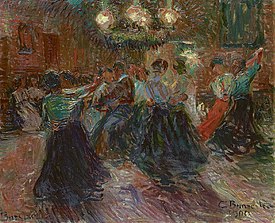
Heikendorf is a municipality in the district of Plön, in Schleswig-Holstein, Germany. It is a seaside resort off the Baltic Sea, located approximately 10 km from Kiel. The oldest part of the town is the Old Viking settlement in Möltenort.
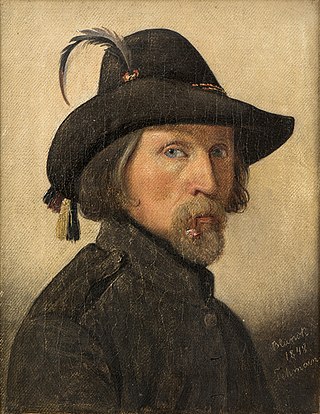
Ditlev Conrad Blunck was a Danish-German painter associated with the Danish Golden Age during the first half of the 19th century.

Jürgen Ovens, also known as Georg, or Jurriaen Ovens whilst in the Netherlands, was a portrait painter and art-dealer from North Frisia and, according to Arnold Houbraken, a pupil of Rembrandt. He is best known for his painting in the city hall of Amsterdam and paintings for the Dukes of Holstein-Gottorp for whom he worked for more than 30 years, also as an art dealer.

Carl Arp was a German landscape painter born in Kiel. He taught in Weimar and had exhibitions in Munich, Berlin, Kiel, Jena and Düsseldorf. He is best known as a founding member of the Schleswig-Holsteinische Kunstgenossenschaft and representative of the Weimar Saxon-Grand Ducal Art School. Subsequent to his studies there under Theodor Hagen and Leopold von Kalckreuth, he spent several years in Italy. Carl Arp is viewed as one of the main representatives of the "en plein air" style of landscape painting.
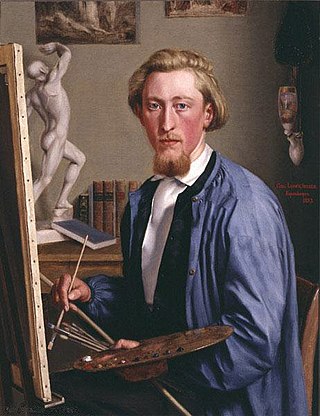
Carl Ludwig Jessen was a North Frisian painter. Today he is known as the "Frisian painter" in Denmark and Germany. As a Naturalist painter he is notable for depicting the contemporary rural life of his native area.
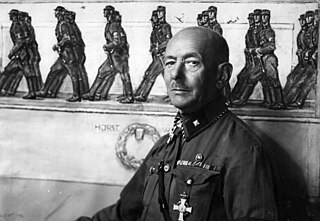
Ludwig Julius Christian Dettmann was a German Impressionist painter. Shortly before his death, he was added to the Gottbegnadeten list, a roster of artists considered crucial to Nazi culture.
Friedrich Bernhard Westphal was a German-Danish genre painter and illustrator. He was also known by his nickname Fritz Westphal.
Ulrich Schulte-Wülwer is a German art historian, specializing in north German painters of the 19th and 20th centuries.

The Ekensund Artists' Colony was a late 19th-century art colony in Egernsund Sogn, now in southern Jutland on the north bank of the Flensburg Firth in Denmark, but then known as Ekensund and part of the Province of Schleswig-Holstein within the German Empire. It drew artists including Wilhelm Dreesen, Alexander Eckener, Otto Heinrich Engel, Emmy Gotzmann, Johannes Knutz, Erich Kubierschky, Jacob Nöbbe, Heinrich Petersen-Angeln, Johann Sander and Fritz Stoltenberg.

Wilhelm Anton Georg Dreesen was a German-Danish photographer. He was involved with the Künstlerkolonie Ekensund. Many of his works were lost in the bombing of Hamburg during World War II.

Carl Schlüter (1846–1884) was a 19th-century German sculptor.

Christian Carl Magnussen was a German painter; primarily of genre scenes.
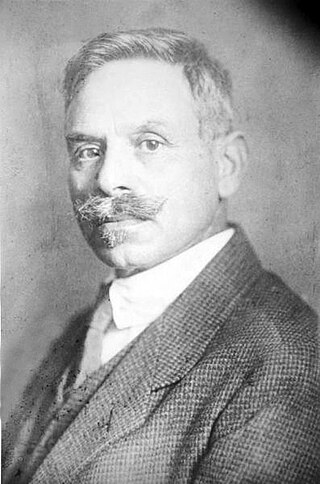
Franz Korwan, born Sally Katzenstein was a German-Jewish landscape painter and Kommunalpolitiker on the island of Sylt. He was associated with the Düsseldorfer Malerschule. Sally is the familiar form of Salomon. His name change was legally recognized in 1924.
Conrad Fehr was a German-Danish painter and sculptor.
August Bausch was a German genre, portrait and history painter of the Düsseldorf school of painting.
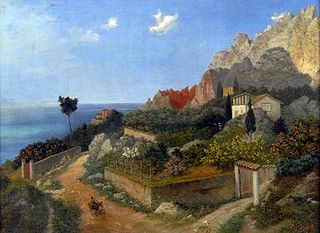
Carl Heinrich Friedrich Freiherr von Binzer was a German painter and author.
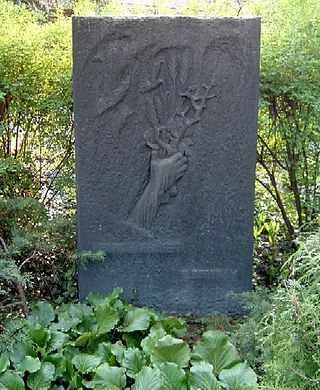
Heinrich Ehmsen was a German painter and graphic artist.
Albert Aereboe was a German painter of the modernity.

Siegfried Detlev Bendixen was a German painter and graphic artist.

Carl Maria Seyppel, also Karl Maria Seyppel, was a German genre and portrait painter, caricaturist, and writer, based in Düsseldorf.
















